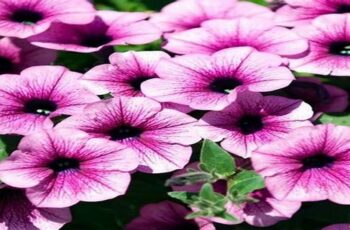Ad Blocker Detected
Our website is made possible by displaying online advertisements to our visitors. Please consider supporting us by disabling your ad blocker.
10 tips for beautiful cucumbers
Cucumbers are one of the most popular vegetables in our gardens and are relatively easy to grow. However, sometimes they disappoint with low yields or misshapen or bitter fruit. What can you do to have beautiful cucumbers? Here are some tips.
1 Choose the right variety.
The main mistake gardeners make is to buy any cucumber they want, regardless of the desired results. There are, among others, pickling cucumbers, with small fruits that are perfect for pickling but do not make good table cucumbers; table cucumbers that do not make good pickles and English cucumbers that only work well in the greenhouse. You can even choose disease-resistant and insect-resistant varieties, such as ‘Marketmore 76’, and then avoid major problems later in the season.
2 Wait for warm weather before planting.
Cucumbers are tropical plants. There is no point in planting them early in the season. Wait until both the soil and the air are warm, with a minimum temperature of 13°C at night. Yet I see people buying plants at the end of May when the nights are still below 5°C! Usually, you have to wait until the 2nd week of June before planting them.
3 Start them in the house.
This is not mandatory in some areas, especially if your garden is protected from the wind, but if you plant your cucumbers indoors around May 15 in, you’ll have beautiful plants to transplant – and cheap ones at that! – 3 to 4 weeks later, which is the right time for transplanting. And they will give you a head start on the season. Sow them in peat pots to avoid damaging the roots when transplanting. Don’t show them too early (a very common beginner’s mistake!), however, otherwise, the plants will become etiolated and have difficulty recovering. You want small seedlings that still have their cotyledons and 2 or 3 mature leaves, no more.
The female flowers are easily recognizable because they have an ovary in the shape of the fruit to come at the base.
4 Grow them in the sun
Remember that the cucumber is a tropical plant. So the more sun it gets, the better it produces. Ideally, the location should be sunny in the morning, when the flowers open, as bees also like the sun and will visit the plants more frequently in an area warmed by the morning sun.
5 Give it rich soil
Cucumbers are greedy plants, so soil rich in compost or manure and adequately, but not excessively, fertilized will give better results. If your soil is poorly drained (e.g. loamy soil), it may help to plant them in a small mound.
6 Climb them on a trellis, stake, or ropes rather than spreading them out on the ground
This way you can grow more plants in less space and the leaves will get more sunlight, but also the fruit will not touch the ground where it can be damaged by slugs, insects, or disease.
7 Water regularly, but not excessively
Cucumbers that are regularly stressed by lack of water become bitter or indigestible. If they are watered too often, however, the plants will rot. Aim for frequent watering (perhaps every 4 or 5 days in hot weather, more often if the plants are grown in pots) and deep watering, watering as soon as the soil starts to dry out. To this end, using a light mulch (7 cm of shredded leaves, straw, compost, etc.) will help keep the soil cooler and more evenly moist, avoiding the damaging “watering down” effect.
Read Also: 16 ways Epsom salt can help your garden grow better
8 Pollinate the flowers yourself if the bees are absent
They do not come out much in hot, cool, or rainy weather. However, the female flower, the one that has to be pollinated to produce fruit, only lasts one day. If you think the bees won’t come, pick a male flower (without fruit at the base), remove its petals and use it as a brush, sticking its tip into the female flower (with fruit at the base), brushing its pistil with pollen. Insufficiently pollinated flowers will produce fruit that falls off before maturity or is deformed.
9 Harvest at the right time
Cucumbers are always eaten when they are immature. (When ripe, they turn orange and bitter.) It’s up to you to decide when the fruit is the right size, depending on the type of cucumber (pickling or table).
10 Harvest often
If you leave the fruit on the plant for too long, it stops producing, but if you harvest regularly, it makes the plant produce again and again.
That’s it! Enjoy your delicious and abundant cucumbers!
Read also: 10 Unbelievable Photos That Prove Women Have Superpowers
[mashshare]

